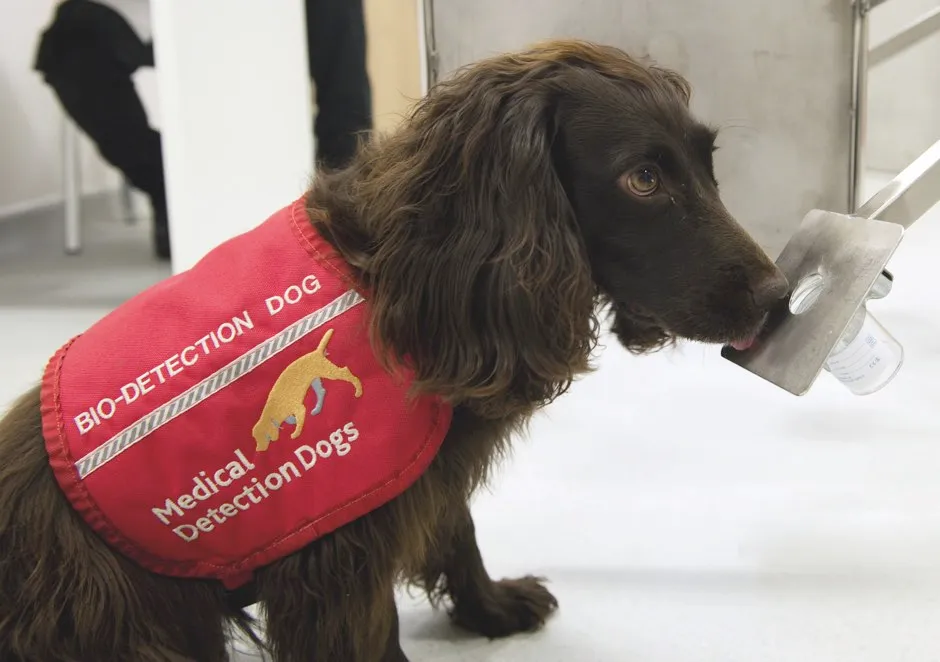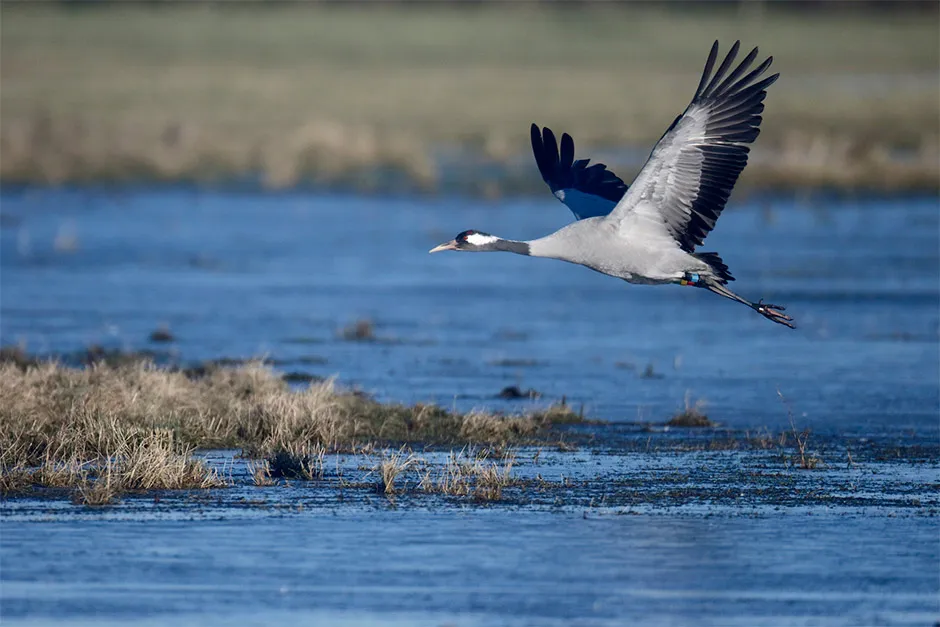Dogs may be joining the fight against COVID-19
The UK charity Medical Detection Dogs is looking into whether man’s best friend could play a role in preventing the spread of COVID-19 by sniffing out the disease.
To date, the charity has published more than a dozen peer reviewed research papers supporting the theory that each disease has its own unique odour, and their scientists think that the coronavirus should be no different.
The charity is currently working on the idea with researchers from the London School of Hygiene and Tropical Medicine (LSHTM) and Durham University - the same team that successfully proved that dogs can be trained to detect malaria. Together they have started preparations to intensively train dogs that could be ready in as little as six weeks to help provide a rapid, non-invasive diagnoses in suspected carriers.
Read more about medical detection dogs:
- Medical detection dogs can sniff out diabetes
- Sniffing out disease: the power of smell in diagnosing illness
Dogs searching for COVID-19 would be trained in the same way as those dogs the charity has already trained to detect diseases like cancer, Parkinson’s and bacterial infections – by sniffing samples in specially designed training rooms and encouraged to indicate when they have found it.
Dogs are also able to detect subtle changes in temperature of the skin, so they could potentially also tell if someone has a fever. Once trained, the dogs could also be used to identify travellers entering the country infected with the virus or be deployed in other public spaces.

“In principle, we’re sure that dogs could detect COVID-19. We are now looking into how we can safely catch the odour of the virus from patients and present it to the dogs,” Dr Claire Guest, CEO and Co-Founder of Medical Detection Dogs.
“The aim is that dogs will be able to screen anyone, including those who are asymptomatic and tell us whether they need to be tested. This would be fast, effective and non-invasive and make sure the limited NHS testing resources are only used where they are really needed.”
Building cycle lanes could boost local businesses
Cycling has lots of benefits: it can help you lose weight, improve your fitness, and gives you an excuse to whack on a snazzy lycra outfit. But it seems building bike lanes could also be beneficial by providing a boost to local businesses, a study from Portland State's Transportation Research and Education Center (TREC) has found.
Researchers studied 14 areas in six different cities across the US - Portland, Seattle, San Francisco, Memphis, Minneapolis and Indianapolis - and found that bike lanes largely boosted business and employment in the retail and food service sectors.
Read more about transport:
- Five innovative vehicles delivering the future of transportation
- Four zippy electric vehicles to power up your commute
Even in cases where a motor vehicle travel lane or parking was removed to make room for a bike lane, food sales and employment tended to go up, according to the report.

“I think that it is very significant that we found that positive business outcomes to the food service and retail industries on these corridors are persistent, even when we looked at different data metrics on employment or sales or when different analytical methods are utilized,” said Jenny Liu, associate professor in the Toulan School of Urban Studies & Planning.
“There is tremendous potential to expand on what we learned in this research project to additional cities and corridors, and to provide policymakers with the opportunity to evaluate street improvement projects before implementation or to collect additional economic/business metrics before and after implementation.”
Conservation efforts successfully reintroduce cranes to the UK
Cranes were once so common that Henry II’s chefs cooked up 115 of them at his Christmas feast in 1251, but a combination of hunting and wetland decline led to their extinction in the 1600s.
In 1979, a small number of wild cranes returned to Norfolk and conservation groups have since been working together to boost their numbers. In 2010, the Great Crane Project – a partnership between the RSPB, WWT and the Pensthorpe Conservation Trust – joined the effort to help improve existing habitats, and hand-rear young birds for release.
Read more about conservation:
- African Black Rhino numbers increasing thanks to 'immense' conservation efforts
- Endangered orangutan numbers starting to stabilise thanks to conservation efforts
As a result, the birds have now spread to other areas of the UK, benefitting from improved habitat such as at the RSPB’s Lakenheath and Nene Washes reserves as well as Natural England’s Humberhead Peatlands. They also began to recolonise Scotland in 2012 and Wales in 2016.
All the conservation effort has boosted numbers to 56 pairs across the UK last year. Of these, it is believed that 47 pairs attempted to breed and raised 26 healthy chicks. The total population is now believed to be over 200 birds - a new record.

“The increase of cranes over the last few years shows just how resilient nature can be when given the chance,” said Damon Bridge, Chair of the UK Crane Working Group.
“With the support of our wonderful partners we’ve been able to recreate more and more of the cranes’ natural habitat, giving them a place to recuperate after the winter and raise their chicks. They are not yet out of the woods, but their continued population climb year after year is a very positive sign.”